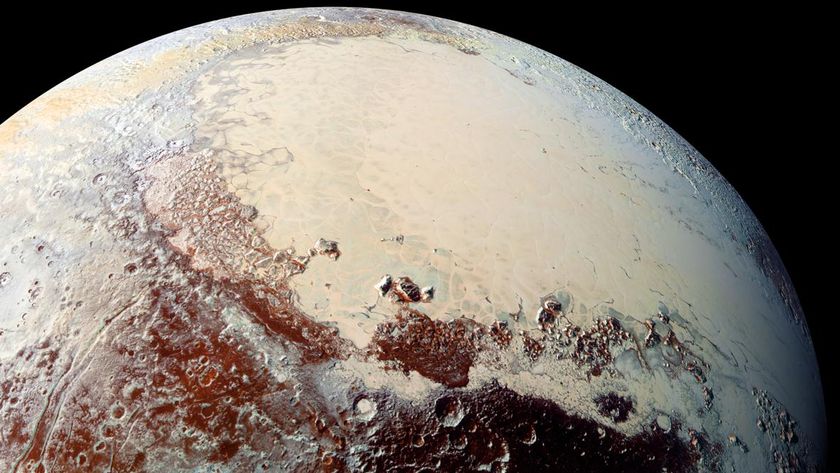Disaster Response Imagery Ample, but Distribution Still Tough
The Myanmar cyclone and Chinese earthquake disasters demonstrated that the world has plenty ofimaging satellites to monitor disasters but is still unable to make imagery andother data easily and widely available to emergency-response teams, governmentofficials said.
The supply of imagerycontinues to grow. Italy's Cosmo-Skymed and Germany's TerraSAR-X radarsatellites both contributed imagery to the relief efforts following the recentcatastrophes in Myanmar and China. In terms of what is available, governmentofficials said the combination of those two satellites, along with Canada's Radarsat, has made radar imagery nearly as easy to obtain as optical imagery. "Todaywe can no longer complain about the Earth observation infrastructure,"said Delilah Al Khudhairy, head of the Institute for Protection and Security ofthe Citizen at the European Union's Joint Research Center in Ispra, Italy. "There is an overwhelmingamount of product available. What we need is to facilitate the tasking ofthe data. It needs to be more user-driven."
In presentations here May27-28 during the Berlin air show, ILA 2008, Al Khudhairy and other governmentofficials said the International Charter for Space and Major Disasters, createdin 1999 to coordinate satellite operators' response to natural catastrophes,needs to be made more responsive.
Charter members includethe European Space Agency and the national space agencies of Argentina, Britain, Canada, China, France, India, Japan and the United States.
The charter has beenactivated 175 times since 1999, most recently May 12 when China, as a charter member, called on charter assistance following the earthquake in Sichuan province, according to figures compiled by the French space agency, CNES.
Because Myanmar authorities were reluctant to call on global assistance, the charter was activatedby the United Nations (U.N.) to respond to that nation's cyclonedisaster.
David Stevens, of theU.N. Office of Outer Space Affairs and a coordinator of the U.N. Space-basedInformation for Disaster Management and Emergency Response, or Spider, program,said the two Asian disasters illustrate the danger of a duplication of effortamong response teams turning imagery into usable maps for relief workers.
Get the Space.com Newsletter
Breaking space news, the latest updates on rocket launches, skywatching events and more!
"This is the firsttime we have seen this," Stevens said of the overlap of agenciesassembling data on disaster areas. "It is an example of how things aredeveloping and it needs to be resolved."
Guenter Schreier of theGerman Aerospace Center, DLR, which in 2003 established the ZKI Center forSatellite-Based Crisis Information — a 24/7 facility to assemble satellite datain the hours after a disaster strikes — said what is missing is a middle layerof data management between those assembling the data and those who need it.
One South Africangovernment official said the charter has proved difficult to activate fornon-members whose domestic catastrophes do not rise to the level that attractsworld attention.
"They have basicallytold us that our problems are not serious enough," this official said.
Several officials saidthe charter has a budget and a mandate and cannot exceed either. Al Khudhairysaid the mandate — natural disasters only — is a limitation that should bereconsidered. "We should be able to invoke the charter for human-causeddisasters such as war refugees," she said.
Jerome Bequignon, aEuropean Space Agency charter representative, agreed that the charter remainsincomplete without a way of delivering the goods quickly, and in an easilyaccessible format. Bequignon said the Group on Earth Observations, known asGEO, based in Geneva and created by around 60 nations, is assembling anInternet portal that ultimately should provide one-stop-shop service permittingdisaster-response teams to select from a range of space-based sensorsoverflying the affected areas.
JoséAchache, GEO's director, said June 5 that his organization is assembling such aWeb site but that it is not yet ready. When it is, he said, at least onebottleneck in the disaster-response chain — where to go to find out what satellite data is available — willbe removed.
Join our Space Forums to keep talking space on the latest missions, night sky and more! And if you have a news tip, correction or comment, let us know at: community@space.com.

Charles Q. Choi is a contributing writer for Space.com and Live Science. He covers all things human origins and astronomy as well as physics, animals and general science topics. Charles has a Master of Arts degree from the University of Missouri-Columbia, School of Journalism and a Bachelor of Arts degree from the University of South Florida. Charles has visited every continent on Earth, drinking rancid yak butter tea in Lhasa, snorkeling with sea lions in the Galapagos and even climbing an iceberg in Antarctica. Visit him at http://www.sciwriter.us
Most Popular





